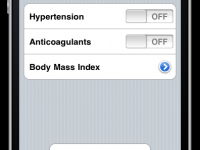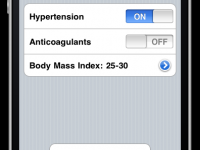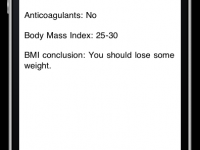Developing for decision support
As I explained in my TED talk, I believe in a future where physicians can use interactive clinical decision support systems to aid decision making in treating the individual patient. Preferably on a mobile platform.
To bring this closer to reality, NeuroMind version 2 should contain interactive decision support features as described above. The first step to make this happen is to get the app’s programming code ready for such interactive features. For this purpose I started developing a separate app where I can test new code, mess around if necessary, without being bothered by all lines of NeuroMind code that are not relevant for now.
A first attempt seemed easy, but on-the-go it turned to be rather complicated. Then I started over, doing things in a different way: good decision! By now, this test application can use several types of input that should be all I need to build the tools I have in mind (for the moment). The code is quite elegant in my opinion, and offers the flexibility I will need for content implementation. Although I still have to get started on the latter…
Below are some screenshots of this test app. It offers Yes/No questions (Hypertension, Anticoagulants), and a list with more options for another question (Body Mass Index). Data are read, collected and shown to the user. Moreover, some simple logic (a switch-statement) is added to advise on weight control. The latter is just text now, but it is not that difficult to expand this simple text representation to more useful content.
Of course, the content itself is not important here. What is important, is that the technical foundation for NeuroMind 2 is getting ready. I am looking forward to play around with “real” content.




Yes i agree, physician can use clinical decision support system in order to make clinical decisions. But it is true that CDS has a number of important quality improvement benefits, including: Increased health care quality and enhanced patient outcomes. Avoidance of errors and adverse events. Improved efficiency, cost-benefit, and provider and patient satisfaction.